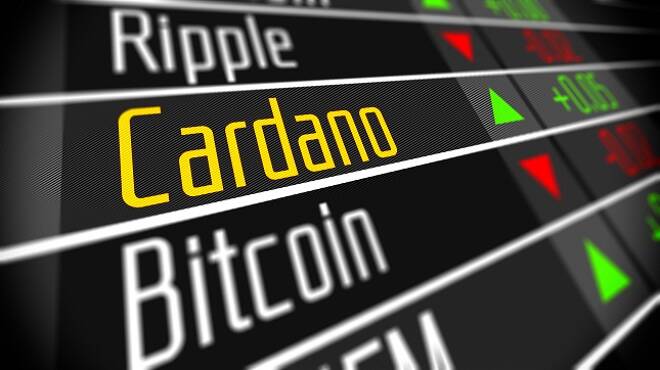Advertisement
Advertisement
Bitcoin and Cardanos’ ADA – Weekly Technical Analysis – June 29th, 2020
By:
It's a bullish start to the week, with Cardano's ADA on the move. The majors will need to steer clear of the pivots to take a run at the resistance levels.
Bitcoin
Bitcoin fell by 1.87% in the week ending 28th June. Following on from a 0.45% decline from the previous week, Bitcoin ended the week at $9,125.4
It was a bullish start to the week, with Bitcoin rallying by 4.27% on Monday before hitting reverse.
The early breakout saw Bitcoin strike a Monday intraweek high $9,795.0 before sliding to a Saturday intraweek low $8,855.0.
Monday’s rally saw Bitcoin break through the first major resistance level at $9,622 before sliding to sub-$9,000 levels.
The reversal saw Bitcoin fall through the first major support level at $8,947 and the 23.6% FIB of $8,900.
A Sunday recovery from early losses saw Bitcoin break back through to $9,000 levels to limit the loss of the week.
5 days in the red, including a 3.55% slide on Wednesday delivered a 3rd consecutive week in the red.
For the week ahead
Bitcoin would need to move through the $9,258 weekly pivot to bring the first major resistance level at $9,662 into play.
Support from the broader market would be needed for Bitcoin to break back through to $9,500 levels.
Barring an extended crypto rally, the first major resistance level and last week’s high $9,795 would likely cap any upside.
In the event of a breakout, Bitcoin could take a run at $9,900 levels before any pullback.
Failure to move through the $9,258 pivot could see Bitcoin see red for a 4th consecutive week.
A pullback through to sub-$9,000 levels would bring the 23.6% FIB of $8,900 and the first major support level at $8,722 into play.
Barring an extended crypto rally, however, Bitcoin should steer well clear of sub-$8,000 levels. The second major support level at $8,318 should limit any downside in the week.
At the time of writing, Bitcoin was up by 0.17% to $9,141.1. A mixed start to the week saw Bitcoin fall to an early morning low $9,107.4 before rising to a high $9,147.7.
Bitcoin left the major support and resistance levels untested at the start of the week.
Cardano’s ADA
Cardano’s ADA rose by 2.36% in the week ending 28th June. Following a 2.54% gain from the previous week, Cardano’s ADA ended the week at $0.08024
It was a choppy start to the week for Cardano’s ADA. A Monday 6.78% rally saw Cardano’s ADA rise to an early in the week high $0.08515 before easing back.
Falling short of the first major resistance level at $0.08812, Cardano’s ADA fell back to $0.082 levels before striking a Wednesday intraweek high $0.08738.
Falling short of the first major resistance level at $0.08812 once more, Cardano’s ADA slid to a Saturday intraweek low $0.07427.
While falling through the week’s $0.7520 pivot, Cardano’s ADA avoided the first major support level at $0.06531.
In spite of 5 consecutive days in the red, Monday’s 6.78% rally and a 3.82% gain on Sunday delivered the upside.
For the week ahead
Cardano’s ADA would need to avoid a fall through the $0.08060 pivot to support a run at the first major resistance level at $0.087.
Support from the broader market would be needed, however, for Cardano’s ADA to break out from $0.085 levels.
Barring another extended crypto rally, the first major resistance level and last week’s high $0.08738 would likely cap any upside.
Failure to avoid a fall through the $0.08060 pivot could see Cardano’s ADA reverse early gains.
A pullback through to sub-$0.080 levels would bring the first major support level at $0.07388 into play.
Barring an extended broader-market sell-off, however, Cardano’s ADA should continue to avoid sub-$0.060 levels. The second major support level at $0.06752 should limit any downside in the week.
At the time of writing, Cardano’s ADA was up by 3.23% to $0.08283. A bullish start to the week saw Cardano’s ADA rally from an early Monday low $0.07996 to a high $0.08385.
Cardano’s ADA left the major support and resistance levels untested at the start of the week.
About the Author
Bob Masonauthor
With over 20 years of experience in the finance industry, Bob has been managing regional teams across Europe and Asia and focusing on analytics across both corporate and financial institutions. Currently he is covering developments relating to the financial markets, including currencies, commodities, alternative asset classes, and global equities.
Latest news and analysis
Advertisement
